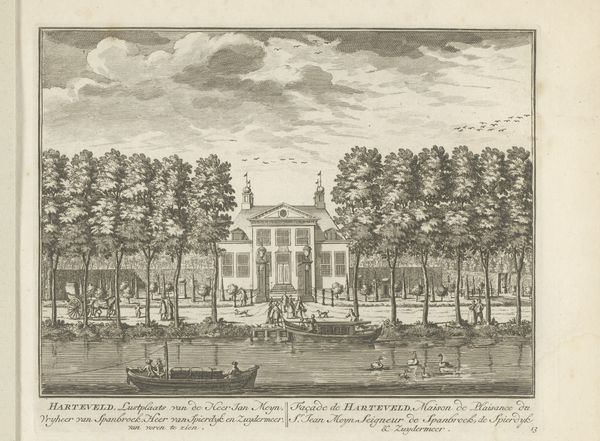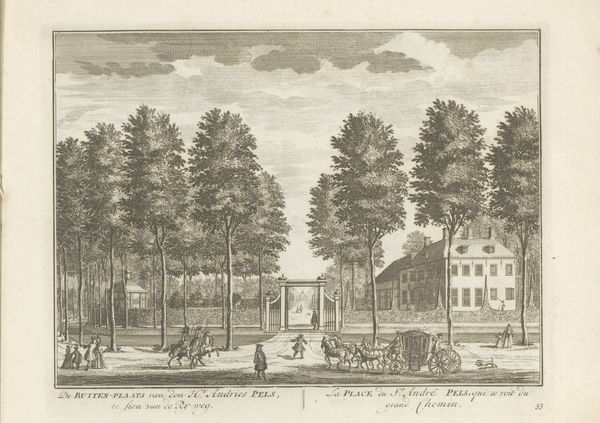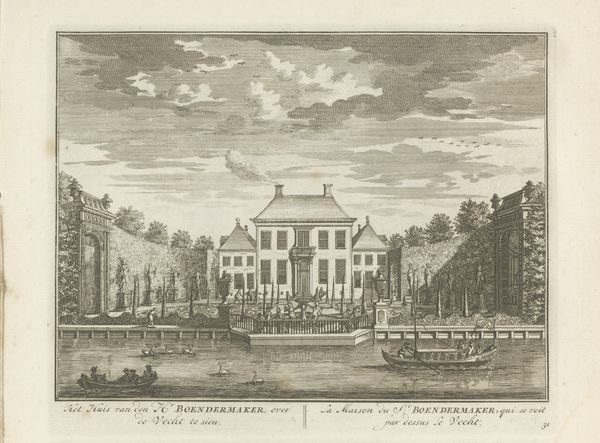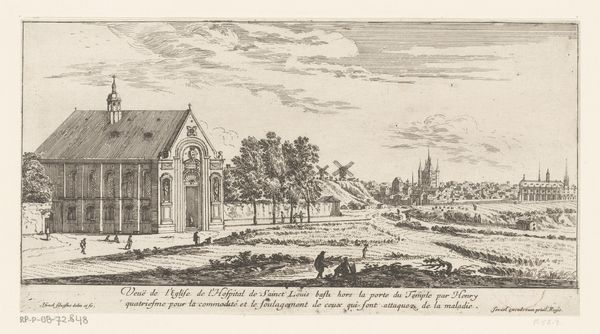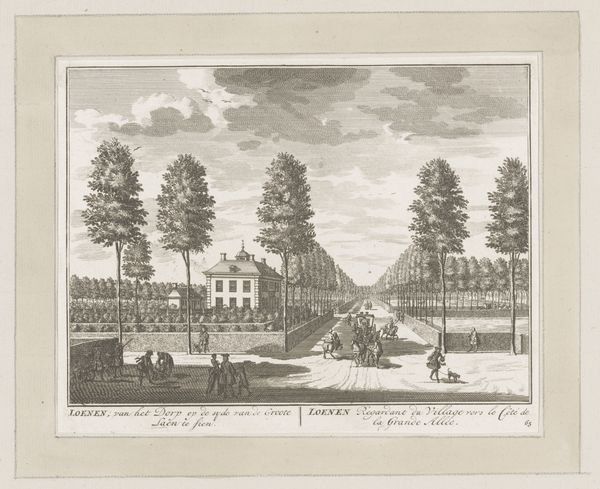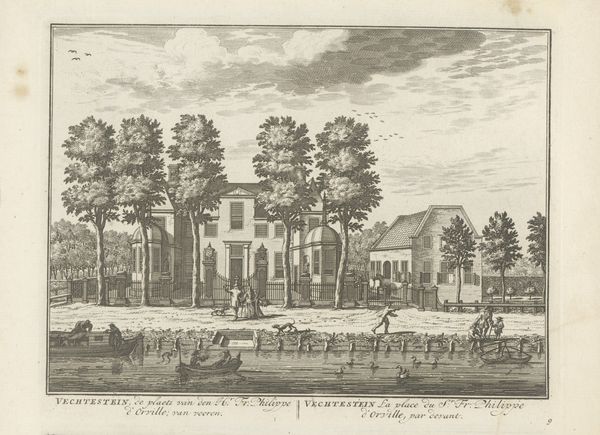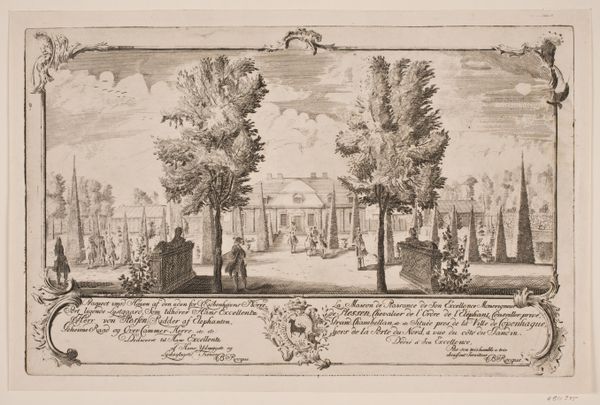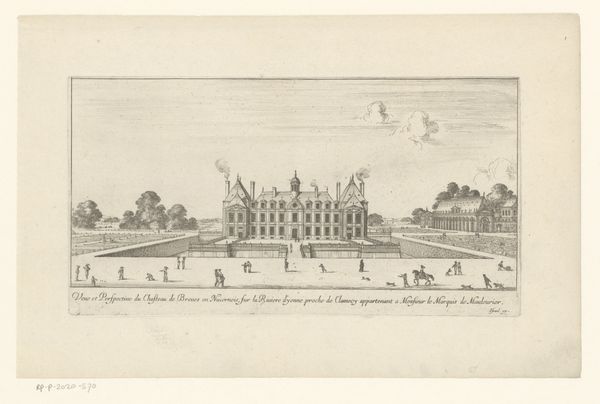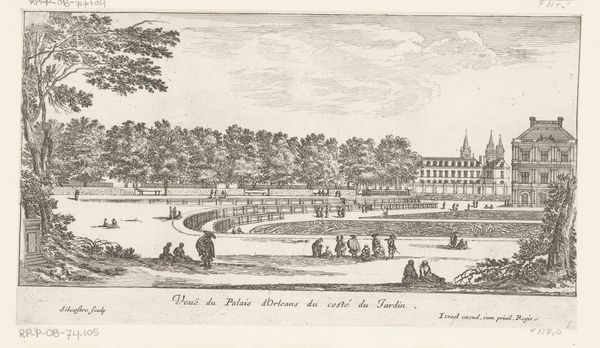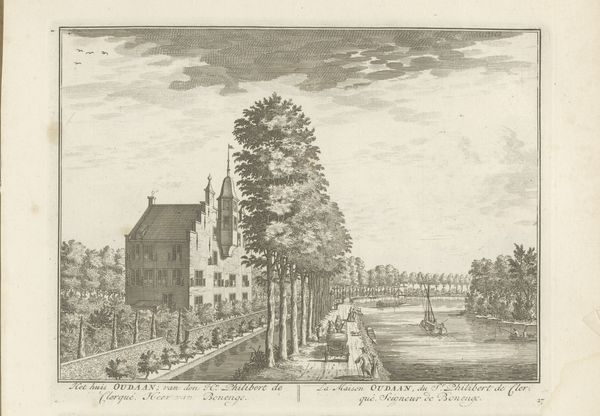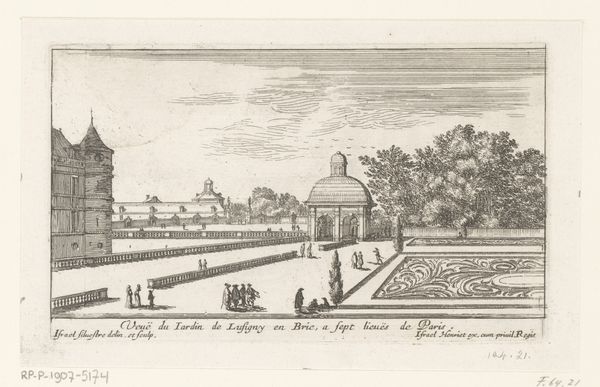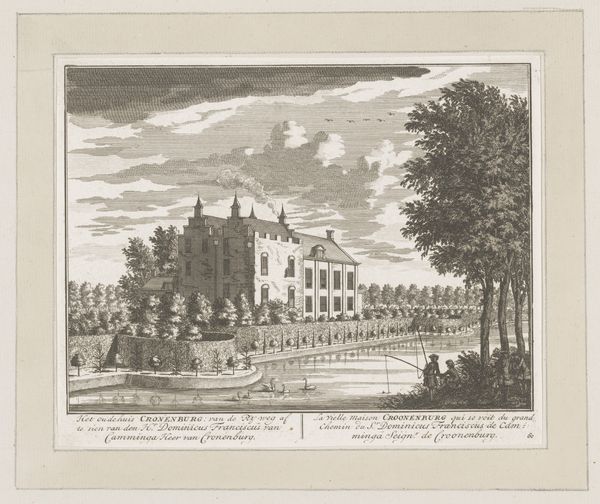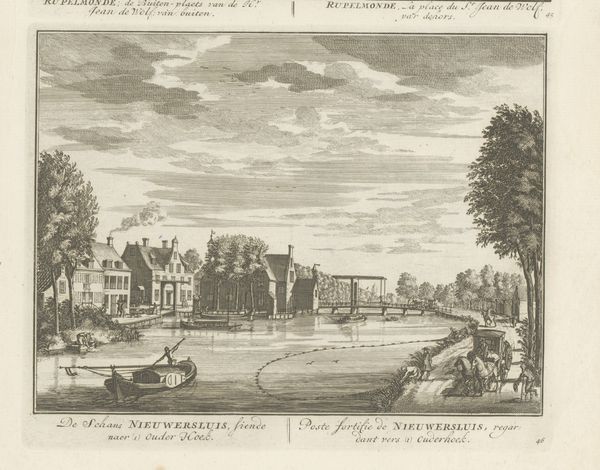
Dimensions: height 161 mm, width 204 mm
Copyright: Rijks Museum: Open Domain
Curator: This delicate engraving is titled "View of the Driemond Estate on the Vecht," created around 1790 by Daniël Stopendaal. Editor: There’s a real serenity here, a cultivated calmness in the almost mathematical precision of the trees and the stately home at the center. You can almost hear the gentle lapping of the water. Curator: Exactly! It depicts Driemond, a country estate, revealing much about Dutch society at the time. Look at the meticulous detail achieved through engraving, a process that demanded great skill. Editor: The use of line is really fascinating, look how the varying line weights establish depth, indicating spatial relationships, and directing the viewer’s gaze across the entire landscape. It's really about making us conscious of the mechanics involved in representing landscape, I think. What type of paper was generally used for printing such a work in that historical context? Curator: Generally, this kind of engraving would have been printed on relatively inexpensive paper, made widely available as the printing industry evolved in response to mercantile activities and increased market demands. It allowed the artwork to reach a broader audience beyond the elite. The political messaging, or simply portraying idyllic estates, served societal purposes, like showcasing economic success. Editor: Right, prints like these had a clear role within social circulation, demonstrating both affluence and artistic taste for public consumption. This wasn’t necessarily about ‘art for art’s sake’, but about presenting a lifestyle, an aspirational model for emerging classes, maybe. Curator: Precisely. Furthermore, prints such as these helped to build and perpetuate the visual rhetoric of nationhood in the era after the Dutch Republic, influencing perceptions and narratives related to progress and culture. The estate owner’s visibility directly reflects the public role imagery held then. Editor: In its way, the medium has just as much significance as the content in revealing societal trends, influencing power dynamics through representational art and creating both commercial success and visibility for those it represents. Thanks for that insight. Curator: My pleasure! I am happy to look beyond the apparent aesthetics and think more about these societal influences!
Comments
No comments
Be the first to comment and join the conversation on the ultimate creative platform.
